Haemophilia in Dogs: Understanding the Bleeding Disorder
Welcome, fellow dog lovers! Today, we’re taking a closer look at a condition that, while rare, is both intriguing and important for all of us in the canine community to understand—haemophilia. Yes, it’s something that affects humans too, but did you know our furry friends can also inherit this disorder? It’s a fascinating topic, albeit a bit complex, but fear not! We’re here to break it down into bite-sized, easily digestible pieces.
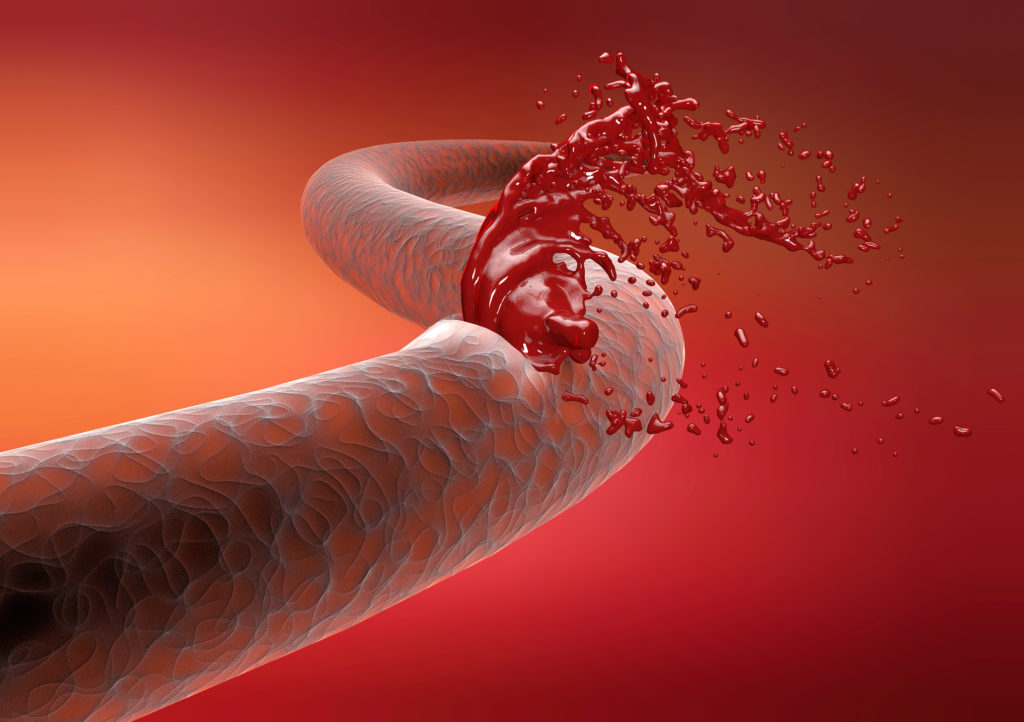
What is Haemophilia?
At its core, haemophilia is a genetic disorder that interferes with the body’s ability to clot blood. For dogs (and humans alike), this means even a minor injury could lead to excessive bleeding. The root of the problem lies in the absence of certain proteins needed for blood clotting. But before we get lost in the technicalities, it’s essential to grasp the basics and understand why this matters to your four-legged companions.
Causes of Haemophilia
The main culprit behind haemophilia is, indeed, genetics. This disorder is passed down from parents to offspring, highlighting the critical role of ethical breeding practices. Responsible breeders should always ensure genetic screening to prevent the transmission of conditions like haemophilia. Without the ability to clot blood efficiently, dogs can experience various health issues, from severe bleeding from minor wounds to more subtle signs like swelling or bruising.
Implications of Haemophilia
Understanding the implications of haemophilia in dogs goes beyond recognising the disorder itself; it’s about comprehending the day-to-day and long-term challenges that can arise. Being armed with this knowledge not only prepares pet owners for potential emergencies but also fosters a nurturing environment for affected dogs. Below, we explore the primary implications of haemophilia, offering insight into what to watch for and how these symptoms can impact a dog’s well-being.
Excessive Bleeding
Perhaps the most direct consequence of haemophilia is the risk of excessive bleeding, even from trivial injuries. For dogs with this condition, a simple scratch could result in a bleeding episode that’s hard to control. This poses a significant risk during surgeries or dental procedures, making routine care a delicate balancing act.
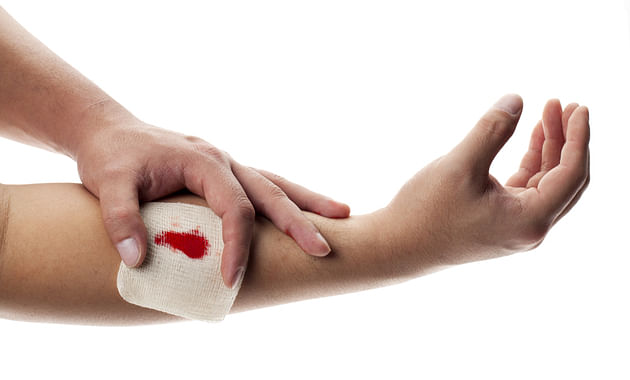
Swelling
Swelling in dogs with haemophilia often occurs at or near the site of an injury. It’s a result of bleeding into the joints or muscles, which may not be immediately visible. This type of bleeding can cause discomfort and, over time, may lead to joint damage or arthritis, significantly affecting a dog’s mobility and quality of life.
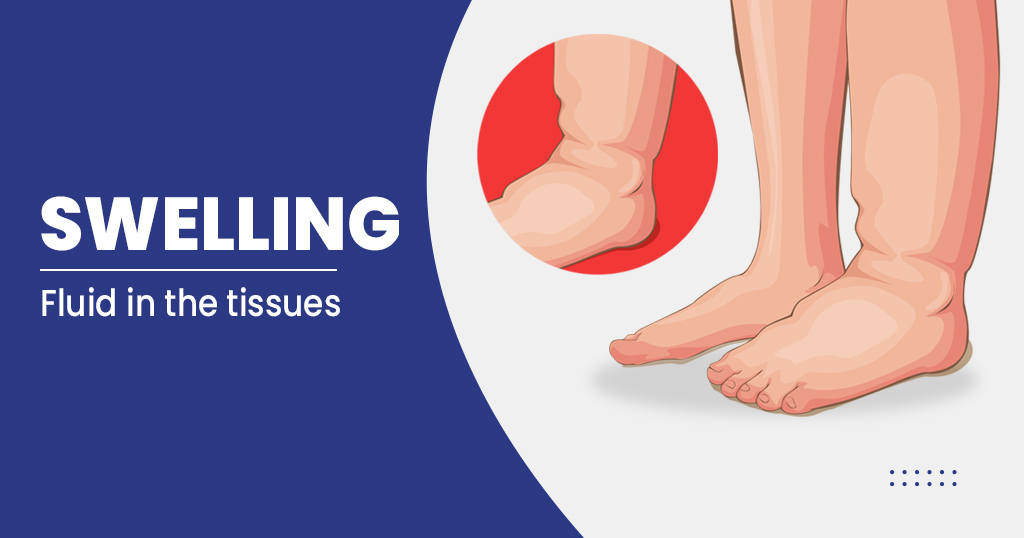
Bruising
Bruises are another common sign of haemophilia in dogs, appearing as patches of discolouration on the skin. These are caused by minor bleeds under the skin and can be an early indicator of the disorder in dogs that haven’t yet had a significant bleeding episode. Bruising may also signal an internal issue that requires immediate medical attention.
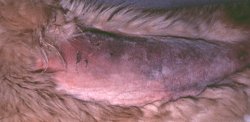
Anemia
Anemia in dogs with haemophilia is due to the loss of blood from either external injuries or internal bleeding. Chronic bleeding events can deplete a dog’s iron stores, leading to fatigue, weakness, and a pale appearance. Managing anemia often requires veterinary intervention, including possible blood transfusions, to ensure affected dogs maintain a good quality of life.

Treatment and Management for Haemophilia
Treating and managing haemophilia in dogs involves a multifaceted approach aimed at minimizing bleeding episodes and ensuring that they lead as normal a life as possible. While there’s no cure for haemophilia, the condition can be managed effectively with the right combination of medical interventions and lifestyle adjustments. The key to successful management lies in early diagnosis, immediate treatment of bleeding episodes, and preventive measures to protect the dog from injuries.
Blood Transfusions
Blood transfusions are critical for dogs experiencing severe bleeding episodes. This procedure involves administering donor blood to the affected dog to replace lost blood and important clotting factors. Blood transfusions can be life-saving during emergencies and are also used to manage chronic bleeding conditions, ensuring dogs maintain adequate blood levels to support their health.
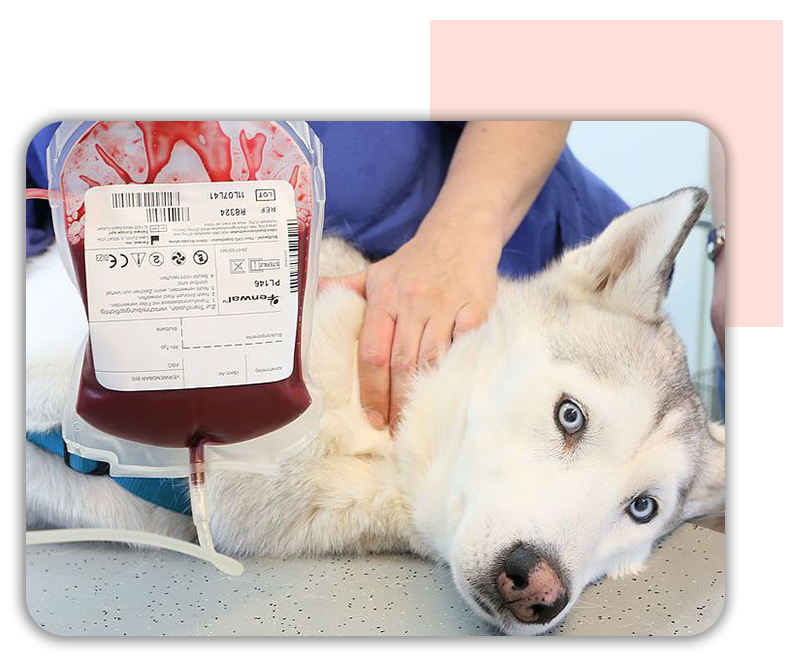
Medications
Several medications can help improve clotting efficiency in dogs with haemophilia. These may include drugs that boost the production of clotting factors or those that temporarily enhance the blood’s ability to clot. It’s essential to administer these medications under the guidance of a veterinarian, as they can have side effects and may not be suitable for every dog.
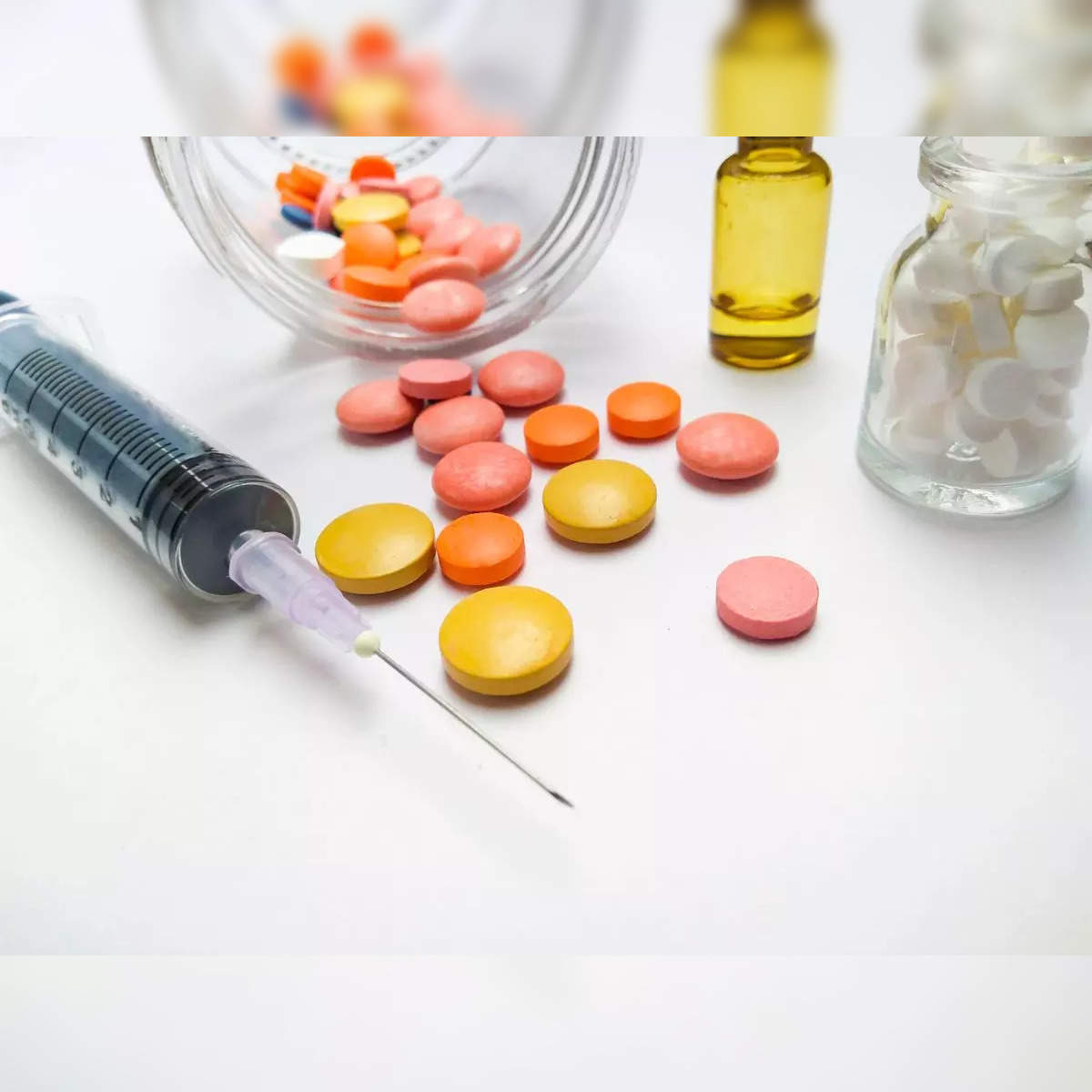
Supportive Care and Monitoring
Supportive care is vital to protect dogs with haemophilia from activities that might cause injuries leading to bleeding. This includes modifying their environment to remove sharp edges or obstacles that could cause accidents, providing soft bedding to reduce the risk of bruising, and choosing low-impact exercises to keep them active without compromising their safety.

Regular veterinary check-ups are crucial for dogs with haemophilia to ensure their condition is managed effectively. During these visits, vets can assess the dog’s health, perform blood tests to monitor clotting times and anemia, and adjust treatment plans as necessary. Early detection of potential complications can significantly enhance the dog’s quality of life and prognosis.
Diving Deeper into Haemophilia
Now, for those who appreciate the nitty-gritty details, haemophilia comes in mainly two forms—Haemophilia A and B. Each type is characterised by the deficiency of a specific clotting factor, essential for the coagulation cascade—a fancy term for the blood clotting process.
To fully appreciate the complexities of haemophilia, it’s crucial to understand the coagulation cascade, the intricate series of events that lead to blood clotting. The upcoming sections will break down this process, highlighting its significance in the context of haemophilia.
When there is an injury
When injury occurs, the body sends out chemical signals that guide platelets to the injury site. Once there, these platelets perform a delicate ballet, adhering to the wound edges and initiating the clotting process. However, without the necessary clotting factors, this process is incomplete, resulting in the symptoms associated with haemophilia.
The Journey of Platelets to the Injury Site
When an injury occurs, the body’s response is both immediate and complex. One of the key players in this process is the platelets, tiny blood cells that rush to the scene of the injury to begin the repair process. This movement towards the injury is known as chemotaxis, which is far from a simple drift but rather an active and directed movement.
Platelets are equipped with specialised receptors on their surface, which sense chemical signals released by damaged cells at the injury site. These signals act as a distress call, guiding the platelets to where they are most needed. Once platelets arrive at the location of the injury, they undergo a transformation, developing protrusions that allow them to interlock and form a barrier—a crucial step in preventing further blood loss.
This process is distinctively different from passive diffusion, where substances move randomly from an area of high concentration to one of low concentration until equilibrium is reached. In contrast, the active movement of platelets involves a targeted, energy-consuming approach to ensure rapid and efficient clot formation, marking the first step in the body’s attempt to heal itself.
The Coagulation Cascade Process
Following the initial response by platelets, the body initiates the coagulation cascade, a sophisticated sequence of events involving numerous clotting factors. This cascade is essentially the body’s way of reinforcing the platelet plug with fibrin threads that act as a net, trapping blood cells and further stabilizing the clot.
The coagulation cascade is triggered almost simultaneously with platelet activation, ensuring a seamless transition from the formation of the initial platelet plug to the development of a stable, durable clot. It begins with the activation of clotting factors in the blood, which are normally inactive proteins circulating throughout the bloodstream. Once an injury occurs, these proteins become activated in a specific sequence, each step activating the next factor in the cascade.
Breaking down the coagulation process, we simplify it into a step-by-step guide to show how the body effectively stops bleeding through the formation of blood clots:
- Injury Occurs: The moment an injury breaks blood vessels, it kickstarts the coagulation process.
- vMF Release: Damaged endothelial cells (the cells lining the inside of blood vessels) release von Willebrand factor (vMF), signalling for help.
- Activation of Factor VII: vMF teams up with Factor VII, turning it into its active form. This duo then activates Factor X.
- Formation of Prothrombinase Complex: Activated Factor X (Xa), with its ally Factor Va, creates the prothrombinase complex. This is the real game-changer, as it transforms prothrombin, a dormant protein, into thrombin.
- Thrombin’s Role: Thrombin jumps into action, converting fibrinogen (another protein playing it cool in the bloodstream) into fibrin. Fibrin doesn’t mess around – it forms long, sticky threads.
- Clot Formation: These fibrin threads don’t just float aimlessly. They weave through the platelets stuck at the injury site, creating a mesh that traps more platelets and red blood cells. The result is a stable, durable clot that staunches the bleeding.
And there you have it—a brief rundown of how a minor breach in a blood vessel triggers a highly coordinated response to prevent blood loss, showcasing the body’s remarkable ability to heal itself.
The coagulation cascade works hand in hand with the platelets’ movement to injury sites, ensuring that the body quickly forms an effective barrier against blood loss. This intricate balance between cellular and biochemical processes showcases the body’s remarkable capability to protect itself and recover from injury.
Impact of Genetic Factors on Coagulation
- Haemophilia A: This condition is a result of insufficient Factor VIII, due to genetic mutations in the F8 gene. In the coagulation cascade, Factor VIII is critical for forming the tenase complex, which is necessary for the activation of Factor X to Xa. Without enough Factor VIII, the pathway to forming a stable clot is disrupted, making it difficult to stop bleeding after an injury.
- Haemophilia B: Stemming from a deficiency in Factor IX because of mutations in the F9 gene, Haemophilia B similarly affects the coagulation cascade. Factor IX works closely with Factor VIII to activate Factor X. A lack of Factor IX means the cascade is interrupted at an early stage, leading to challenges in clot formation and an increased tendency to bleed.
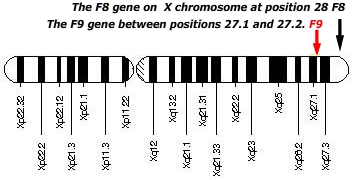
Both conditions demonstrate how specific genetic mutations can impair the body’s natural defence against blood loss, highlighting the vital roles of Factors VIII and IX in the process of blood coagulation.
The clotting process, involving several protein interactions, is hindered in dogs with haemophilia due to a disrupted key step, causing the bleeding issues typical of the disorder.
Curious Questions
What is the main trigger for the coagulation cascade?
The initiation of the coagulation cascade, a crucial process in blood clot formation, primarily hinges on the release of von Willebrand Factor (vWF) into the bloodstream. This occurs when endothelial cells, which line the blood vessels, are damaged or broken. The sudden increase in vWF concentration serves as a signal, catalyzing a series of reactions that involve key clotting factors, including Factor VIII. vWF not only kickstarts the clotting process by binding and stabilizing Factor VIII but also enhances its efficiency, creating a swift and effective response to vessel injury. This initial step is vital, setting the stage for the complex interplay of proteins necessary for blood coagulation and, ultimately, wound healing.
Why is Haemophilia more common in males?
Haemophilia primarily manifests in males due to its inheritance pattern. It’s a genetic condition linked to the X chromosome; since males have only one X chromosome (XY genetic makeup) and females have two (XX), a single defective X chromosome will lead to haemophilia in males. If a male inherits an X chromosome with the haemophilia mutation from his mother, he will show symptoms of the disease.
In contrast, females, having two X chromosomes, are typically carriers unless they inherit the defective gene from both parents, which is statistically less common. This genetic mechanism explains why males are overwhelmingly more affected by haemophilia.
Why does haemophilia cause swelling?
Haemophilia leads to increased bleeding due to the lack of proteins needed for blood clotting, which can cause blood to seep into joints and muscles. This uncontrolled bleeding can result in painful swellings and long-term joint damage, as blood in these areas isn’t supposed to be there. Over time, repeated bleeding into the same joints can degrade the cartilage and bone, leading to arthritis or even the need for joint replacement surgeries. Additionally, bleeding into muscles can press on nerves, causing numbness or pain, further complicating the situation for individuals with haemophilia.
Why does haemophilia causes bruising?
Haemophilia significantly increases the risk of bruising even from minor injuries because it impairs the body’s ability to form blood clots. Normally, when capillaries, the smallest blood vessels, are damaged, a series of reactions trigger the formation of a clot to stop further bleeding. However, in individuals with haemophilia, these reactions are either slow or incomplete due to the absence or malfunctioning of certain clotting proteins. Thus, even a simple knock or bump can cause capillaries to burst and continue to bleed beneath the skin, leading to a bruise. This means that for someone with haemophilia, activities that might result in minor bumps can result in noticeable bruises that are larger and last longer than typical.
Why does haemophilia causes Anemia?
Anemia in haemophilia occurs predominantly in cases of severe bleeding. This is because significant and recurrent blood loss leads to a reduction in red blood cells, which are crucial for carrying oxygen throughout the body. The body can compensate for minor losses, but when bleeding is extensive or repeated, it cannot produce red blood cells quickly enough to replace those lost. This shortfall results in anemia, manifesting symptoms such as fatigue, weakness, and pallor. It’s a condition that underlines the importance of effective management and treatment strategies for individuals with severe haemophilia to prevent such complications.
What are the side effects of medications for haemophilia?
The reaction to haemophilia medications can vary significantly from one individual to another, highlighting the importance of a tailored medical approach. Commonly observed side effects, though not often serious, should still be monitored closely:
- Allergic Reactions - Some individuals may exhibit signs of an allergic response to haemophilia treatments. Symptoms can range from mild, such as rashes, to more severe reactions like anaphylaxis. Prompt recognition and management are essential.
- Injection Site Reactions - Reactions at the site of injection are relatively common but typically mild in nature. Redness, swelling, and discomfort might be experienced, although these symptoms usually resolve on their own.
- Thrombosis - Although it’s less common, there is a risk of thrombosis or blood clots forming as a reaction to certain treatments. Monitoring for signs of thrombosis is crucial, especially in individuals with additional risk factors.
- General Side Effects - General side effects including nausea, vomiting, and mild fever can occur. While these symptoms are usually not severe, they can affect quality of life and may require supportive care or adjustments in therapy.
It’s paramount for patients and caregivers to be vigilant about any side effects experienced and communicate them to their healthcare provider for appropriate management.
Wrapping Up
While haemophilia in dogs requires careful management, it’s not a death sentence. With the correct knowledge and support, affected dogs can lead relatively normal lives. It’s also a reminder of the importance of responsible breeding practices to minimize the spread of genetic disorders.
For dog breeders, trainers, and owners, understanding the implications of hemophilia is crucial. It’s about ensuring the health and happiness of our beloved pets, and knowledge is the first step towards that goal.
We’ve covered a lot today, but don’t worry if you still have questions. Hemophilia is a complex condition, and it’s okay to seek more information. Whether you’re concerned about swelling, bruising, or the implications of treatment side effects, knowledge is your best tool.
Remember, whether you’re a seasoned dog breeder or a new dog owner, keeping informed about conditions like haemophilia is part of ensuring the well-being of our furry friends. Here’s to their health and happiness!
I hope this guide has been helpful in shedding light on hemophilia in dogs. Stay tuned for more insights into dog health, care tips, and much more. Your furry companion deserves the best, and together, we can make sure they get it.
Thanks, Peace and Love!
Shafik Walakaka